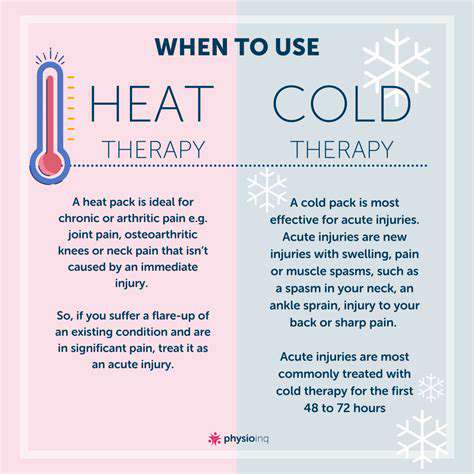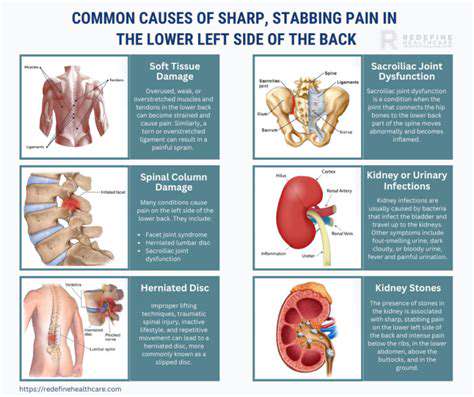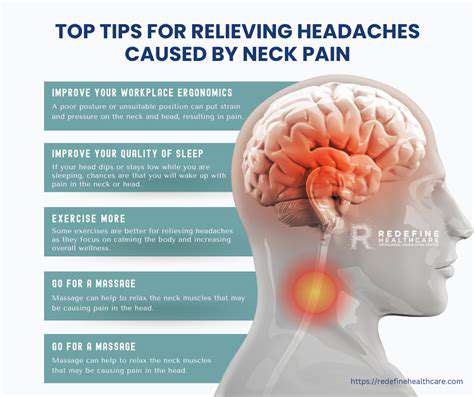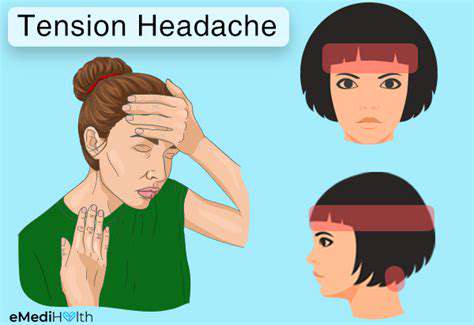Exploring the Link Between Muscle Tension and Headache Pain for Effective Treatment
The Physiology of Muscle Tension and Headaches
Understanding Muscle Tension
Muscle tension refers to the state of contracted muscles, which can result from various factors including stress, poor posture, or even prolonged activities such as computer work. This tension can manifest itself physically, leading to discomfort and varying degrees of pain throughout the body. Often, the tension is localized, affecting specific muscle groups in the neck, shoulders, or back. The accumulation of this tension can gradually lead to more severe issues if not addressed in a timely manner.
In addition to physical manifestations, muscle tension can have significant psychological implications. The body's response to stress can lead to chronic tension that affects a person's ability to relax, ultimately impacting their emotional well-being. This cycle can create an environment where headaches become a frequent and debilitating issue, as the tension in the muscles often contributes to the development of tension-type headaches.
Understanding the mechanisms behind muscle tension is essential for effective treatment. Techniques such as stretching, massage, and relaxation exercises can alleviate accumulated tension, promoting better muscle health. A holistic approach that combines physical therapy, lifestyle changes, and mental health support can provide relief, preventing the return of muscle tension and associated headache pain.
The Connection Between Muscle Tension and Headache Pain
The connection between muscle tension and headache pain is complex and well-documented in medical literature. Tension headaches are among the most common types of headaches, characterized by a dull, aching sensation and tightness around the head. Research indicates that excessive muscle tension in the neck and shoulders can irritate the surrounding nerves, leading to pain that radiates to the head. This physiological response highlights the importance of understanding tension-relief strategies.
Furthermore, episodes of muscle tension can lead to a vicious cycle of pain and discomfort. As muscle fibers remain contracted, blood flow becomes restricted, depriving them of essential nutrients and oxygen. This can contribute to inflammation and pain, which then exacerbates tension further, leading to even more severe headache episodes. Identifying and addressing the root causes of muscle tension can be crucial in developing effective headache management strategies.
Several treatment options are available to combat this connection between muscle tension and headaches. These include physical therapies such as chiropractic manipulation and massage, which have shown significant efficacy in reducing muscle tightness. Additionally, relaxation techniques like yoga and mindfulness can help to ease stress and promote a more balanced muscle tone, leading to a decrease in headache frequency and intensity. By focusing on both prevention and treatment, individuals can better manage headaches related to muscular issues.
Effective Treatment Approaches
Understanding Muscle Tension and Its Role in Headache Pain
Muscle tension is often an underlying factor contributing to headaches, particularly tension-type headaches. When the muscles in the neck, shoulders, and scalp tighten, they can create a stranglehold on the nerves and blood vessels, leading to painful sensations. This connection suggests that addressing muscle tension could be vital in alleviating headache symptoms.
Research indicates that chronic muscle tension can trigger various types of headaches, underscoring the importance of recognizing muscle health as a critical component of headache treatment strategies. Physiological stress, poor posture, and prolonged periods of inactivity can exacerbate muscle tightness and contribute to recurrent headache episodes.
An understanding of the relationship between muscle tension and headaches emphasizes the need for comprehensive treatment approaches. These include physical therapies aimed at reducing tension, managing stress, and promoting overall musculoskeletal health to prevent headache occurrences.
Physical Therapies for Muscle Tension Relief
Physical therapy has emerged as one of the most effective modalities for alleviating muscle tension related to headaches. Techniques such as massage therapy, posture correction, and targeted exercises can help to release tight muscle groups, thus reducing headache frequency and intensity. Massage therapy, in particular, can improve blood circulation, ease muscle tightness, and provide profound relaxation.
Another essential component of physical therapy is the introduction of stretching and strength-building exercises designed to improve muscle balance and flexibility. Exercises that focus on the neck and shoulder girdle are particularly beneficial, as they target common areas where muscle tension accumulates, offering long-term relief from headache pain.
Moreover, physical therapists often incorporate ergonomic assessments to help individuals adopt better postural habits in their daily activities. By fostering an environment that minimizes strain, these assessments can significantly reduce muscle tension, thereby decreasing the likelihood of headaches arising from musculoskeletal stress.
Integrative Approaches for Comprehensive Headache Management
Integrative approaches that combine multiple therapeutic modalities are gaining popularity in the management of headache pain. These strategies often include a blend of conventional treatments, such as medication, and holistic practices, like acupuncture, yoga, and mindfulness meditation. The goal is to address not only the physical symptoms but also the psychological stressors that contribute to muscle tension and headaches.
Acupuncture, for example, has been shown to effectively reduce headache frequency by targeting specific pressure points that relieve both muscle tension and pain. This ancient practice encourages the body to release endorphins, which can alleviate discomfort and promote relaxation, making it an excellent adjunct to other physical therapies.
Moreover, lifestyle adjustments play a crucial role in integrating effective headache management. Incorporating regular physical activity, ensuring adequate hydration, and practicing stress-reduction techniques can enhance overall well-being and minimize the likelihood of muscle tension contributing to headaches in the first place. By adopting a holistic approach, individuals may find a comprehensive path to lasting relief.





